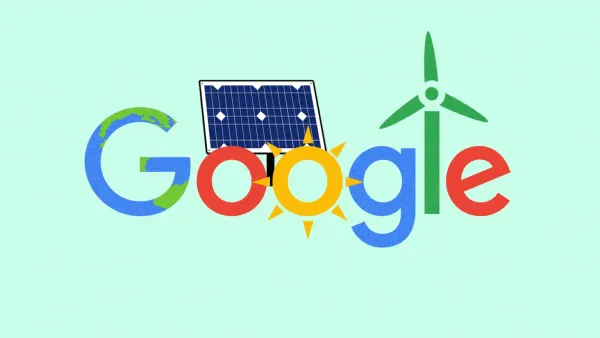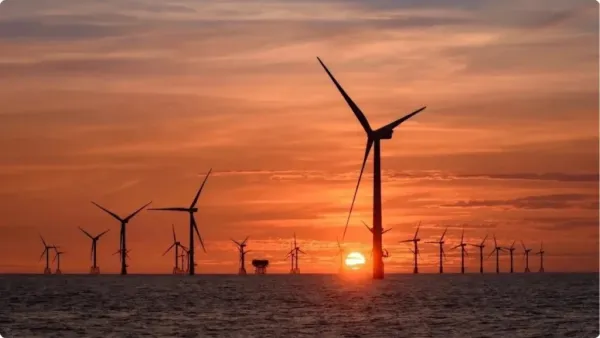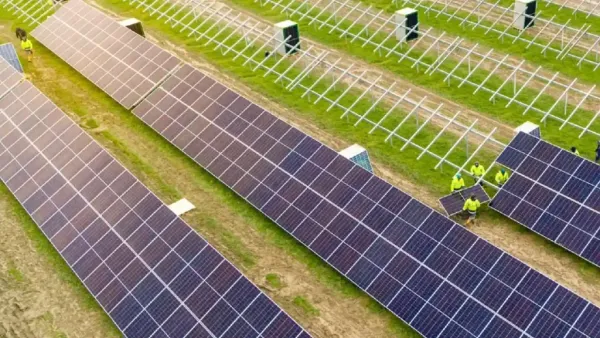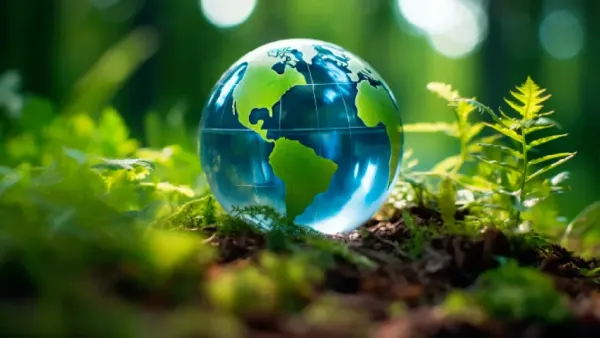

Since its inception, Google has always cast itself as a progressive entity regarding environmental sustainability and especially in energy usage. The journey began in 2007 when, for the very first time, the company was declared carbon neutral. Not only it was the first big company that really talked about going carbon-free, but it also pioneered major initiatives toward carbon-free energy, including Google’s 24/7 Carbon-Free Energy.. Fast forward ten years to 2017, and Google became the first big company to buy 100% renewable power wherever it is consumed in the world on an annual basis and, hence, has kept doing so ever since.

By 2020, realising that annually matching does not completely offset carbon emissions from its operations, Google announced what it describes as its most ambitious climate target: to run everywhere, all the time, on carbon-free energy (CFE) by 2030. This gigantic commitment, in the words of Google, represents a step beyond merely matching annually measured consumption to guaranteeing that hourly carbon-free electricity actually supports Google’s operations in the same regional grid in which the energy is consumed.
The 24/7 CFE concept is quite complex than the traditional paradigm of procuring and equating total annual electricity consumption to an equivalent amount of renewable energy purchased from somewhere else. While it is of utmost importance as a first step to an annual matching to show serious intent in improving renewable energy capacities, it hardly secures an hour-to-hour guarantee that the electricity consumed is carbon-free.
Because of the inherent intermittency of many renewable sources (mostly solar and wind), which factor in weather conditions, facilities run on a grid that either largely depends on or heavily intermittently uses renewables such as solar/wind may have to draw on fossil fuel-based electricity whenever the renewable generation is low (during nighttime hours or on cloudy/calm days).


In other words, 24/7 CFE ensures that any single unit of electricity used in Google’s operations in a location at any hour of the day is offset by carbon-free electric power generated on the same regional grid. This way, the problem of energy variability is tackled head-on and the very grid is powered with clean energy, as opposed to merely offsetting energy consumption through other means.
Google calculates its hours of matching with regional CFE by considering its contracted clean energy production located within the grid in which it operates, the overall resource mix of that grid, and its electricity consumption. With this, the intention is to ensure that no carbon emission is left to be associated with the use of electricity.
After setting the 24/7 CFE goal, efforts followed worldwide via Google’s varied initiatives. By early 2024, the company claimed to have been running about 66% on carbon-free energy on an hourly basis throughout its data centres and offices. The 2024 Environmental Report for FY 2023, however, stuck to this number, mentioning an average of 64% carbon-free energy worldwide throughout Google data centres and offices from the period 2022 to 2023. The percentage was held despite the growth in electricity consumption during this period.


While the global average provides an overview, the sources indicate that progress varies significantly depending on the regional grid. Regions like Singapore and Taiwan present unique challenges due to land constraints for large-scale wind and solar deployment. Other areas face hurdles due to energy policies not favour renewable development. Achieving the 24/7 CFE goal requires transforming Google’s operations and accelerating a just transition to clean energy across the entire grids where the company operates.
Google went a step ahead of its strategies with traditional Power Purchase Agreements (PPAs) and started to embrace novel approaches. The company was at the forefront of adopting PPAs for purchasing renewable energy corporately. It is currently innovating with newer transactional structures, including from single-source to multi-source and multi-technology blended PPAs, creating less conventional utility programs for wider clean energy access, and formulating programs where more than one user may share clean energy assets.
Google recently executed one good example of such a program in partnership with Silicon Valley Clean Energy (SVCE)California. This ten-year agreement, announced in June 2022, laid out a new 24/7 renewable energy service that delivers hourly renewable energy matching, integrated demand management, and investments towards community decarbonisation.


The partnership utilises a 24/7 “CFE Score” to measure and manage an optimised portfolio of resources, including wind, solar, geothermal, and battery storage to match hourly demand. This collaboration is seen as a model for large commercial customers and energy providers working together to advance grid decarbonisation. Another partnership example is the Memorandum of Understanding signed with TotalEnergies Europe in January 2025 to help Google achieve its 24/7 CFE goal in the Netherlands. TotalEnergies will help integrate PPAs and develop battery storage projects to address the intermittent nature of renewables.
Google is investing in various energy technologies and projects globally. This includes investments in solar and geothermal energy, such as the partnership with BlackRock in 2024 to invest in a portfolio of solar projects from New Green Power in Taiwan. In the United States, Google signed the world’s first corporate agreement to develop a next-generation geothermal power project with clean-energy startup Fervo. The company also leverages its technological expertise internally.
Google’s new carbon-intelligent computing platform shifts certain non-urgent data centre workloads to times when low-carbon power sources are most available on regional grids. It plans to expand this to shift work across different data centre sites. Google’s data centres are also designed for high energy efficiency, being about 1.8 times more energy efficient than typical enterprise data centres.
While the major initiative is the 24/7 CFE, there are other actions under the umbrella of Google Sustainability. Google wants to be net zero by 2030 for all its operations and value chain. This also implies reducing absolute emissions of Scope 1, 2, and 3 by 50% by 2030 against the base year of emissions in 2019. Residual emissions shall go towards carbon removals in cases where those cannot be reduced further.


The Environmental Report 2024 attends to the dominant challenges faced in 2023, which saw a 13% increase in GHG emissions year over year. The increase in emissions has largely been fueled by energy consumption by data centers, concurrently with emissions from supply chains. Even after achieving 100% annual renewable energy matching for seven consecutive years and upholding that 64% CFE average, we see an increase in Scope 2, the very complexity imposed by Scope 2 accounting rules, thus begging for examination of how various sustainability objectives align.
Scope 3, the indirect ones proceeding from the value chain, such as equipment manufacturing, comprise a large portion of Google’s footprint (approximately 70% to 10.8 million tCO2e in 2023), making them an obvious target for reductions through supplier engagement and reductions in embodied carbon.
Besides carbon, water is another area of stewardship that Google is considering; a watershed for how much water is replenished compared with how much is used. It is estimated that in 2023, the company replenished about 1 billion gallons of water, which amounts to 18% of its freshwater consumption.
Developing a circular economy is exemplary so as to place an advantageous emphasis on reuse and a detrimental emphasis on waste. The company is also targeting to make all its product packaging plastic-free by 2025 and thereby at least achieve 99% plastic-free packaging for new products introduced in 2023. Elsewhere, the company is aiming for Zero Waste to Landfill for its data centre operations worldwide. Restoration of nature and biodiversity constitutes the other pillar of their strategy.


Google sees 24/7 CFE not only as an internal target but as an accelerated means for the bigger transformation towards a decarbonised electricity system. By practically working on this challenge in their operations that host huge data centres and offices on six continents in a number of countries, Google desires to demonstrate that a carbon-free future is attainable and can be implemented in time to avert the most serious consequences of climate change.
The company stresses that realising this goal requires collaboration with governments, industrial partners, utilities, customers, and communities at large. By joining with partners in the UN Energy Compact initiative to launch the 24/7 Carbon-Free Energy Compact, Google will further bolster the movement for zero-carbon electricity. Google also backs the Global Renewables Alliance in pushing the agenda to triple worldwide renewable energy capacity by 2030.
While some challenges sit in the way of cost figures behind some advanced technologies, for instance, and the snares of diverse policy landscapes-Google’s analyses indicate that 24/7 CFE is more feasible and cost-efficient than ever, thus paving the way for others to follow suit. This is highlighted by the 2025 offshore wind deal in Taiwan, another joint venture Google will invest in and partner strategically in vital regions so that clean energy portfolios with diversity and positioned to produce around the clock can power its operations as well as expedite decarbonisation on a global scale.